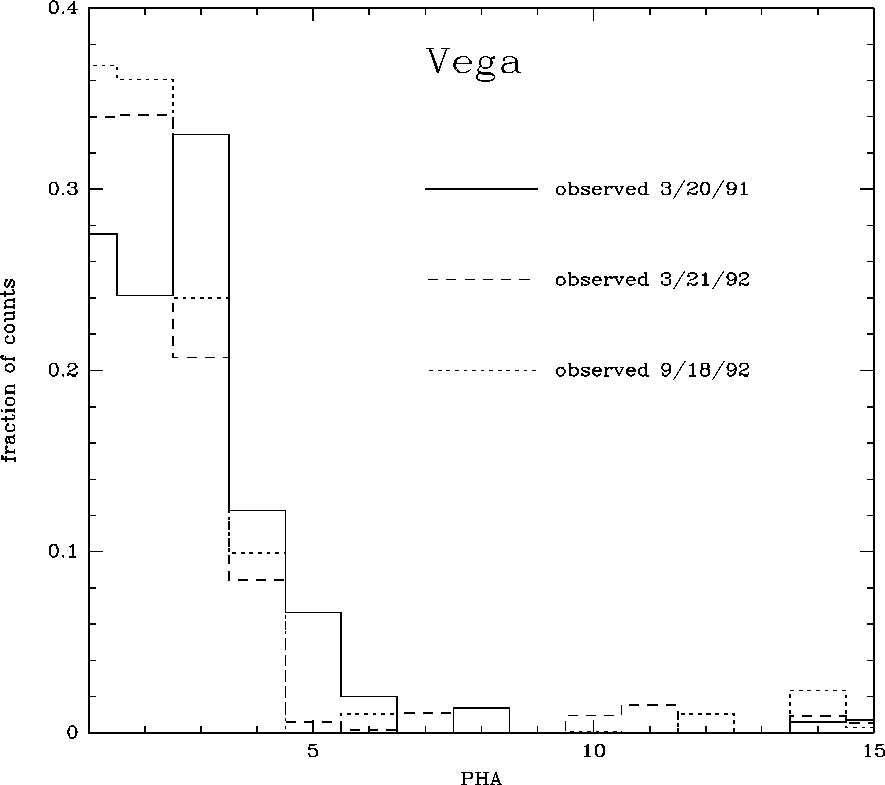| About ROSAT |
ROSAT Home Page | ROSAT Images |
|---|
The pre-flight prediction of the detector UV response was underestimated.
Vega (V = 0.03, A0 V, distance= 8.1 pc), a star relatively bright
in the UV, gives a count rate of 0.10 counts s ![]() (7 times that of the Einstein HRI), and
beta Car (V = 1.68, A0 III, distance=26 pc) gives a count rate of
0.006 counts s
(7 times that of the Einstein HRI), and
beta Car (V = 1.68, A0 III, distance=26 pc) gives a count rate of
0.006 counts s ![]() .
While it is believed that the offending radiation occurs primarily
in the 1500-1700 Angstrom band, there is no explanation as to why
the PHA distribution for Vega is ``softer'' than that from the
UV calibration lamp (1800 Angstrom); compare
Figures 5.20 and 5.22
[Silverman
et al.1996]
If the above band is responsible for the Vega count rate,
the effective area of the HRI in the 1500 - 1700 Angstrom band
is
.
While it is believed that the offending radiation occurs primarily
in the 1500-1700 Angstrom band, there is no explanation as to why
the PHA distribution for Vega is ``softer'' than that from the
UV calibration lamp (1800 Angstrom); compare
Figures 5.20 and 5.22
[Silverman
et al.1996]
If the above band is responsible for the Vega count rate,
the effective area of the HRI in the 1500 - 1700 Angstrom band
is ![]() cm
cm ![]() .
A report in the literature
[Arp1995]
interpreted some low level features in maps constructed in only
the lowest pulse height channels as ``leaked'' UV radiation from
celestial emission.
.
A report in the literature
[Arp1995]
interpreted some low level features in maps constructed in only
the lowest pulse height channels as ``leaked'' UV radiation from
celestial emission.
Subsequently, it has been shown that the observed features are caused by the known properties of the spatial gain map [Silverman et al.1996].

Figure 5.20: The pulse height distribution in several HRI observations of Vega.
While the peak in the pulse height distribution has continuously
shifted downward during the mission, the total count rate
(in all PHA channels) has remained nearly constant
(see Tab. 5.4).